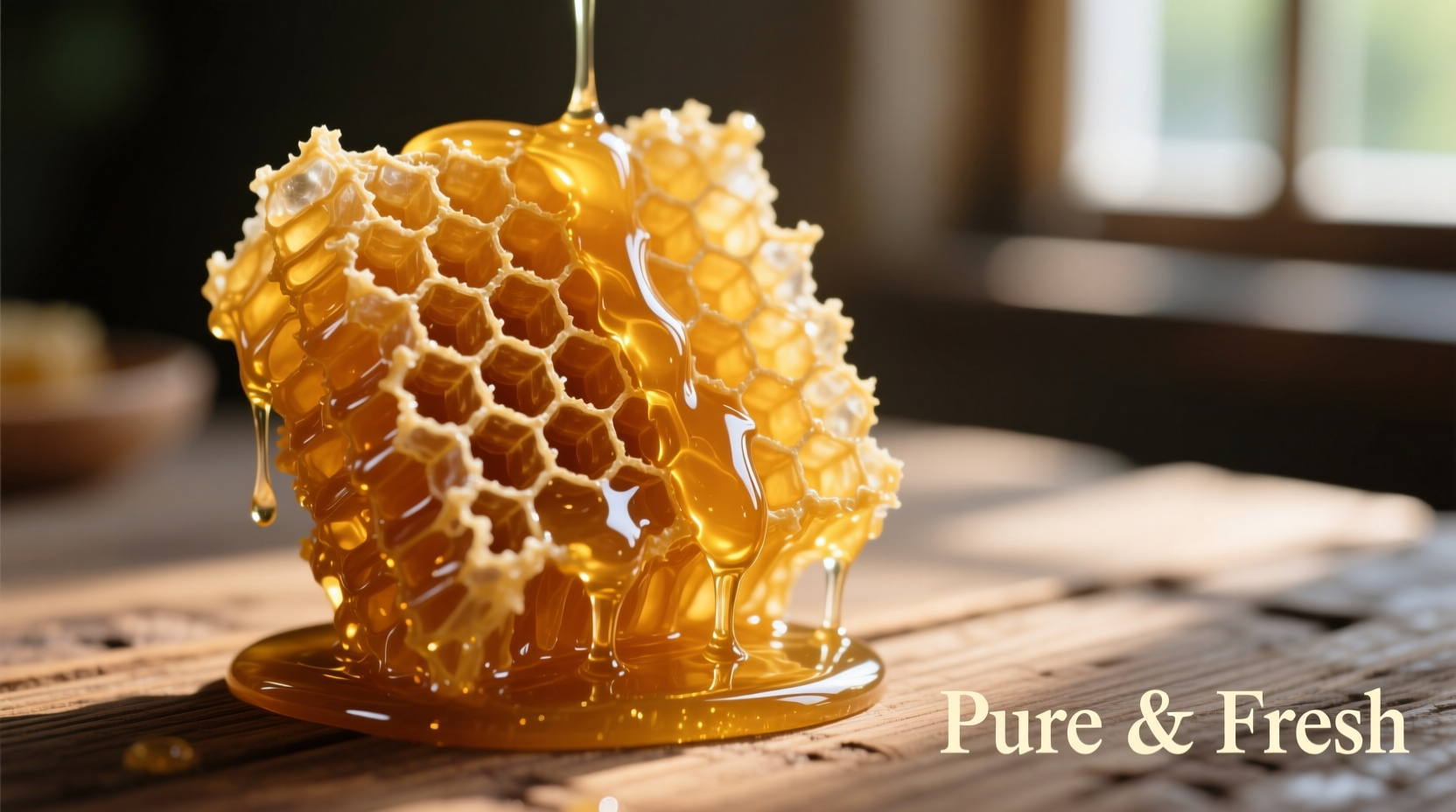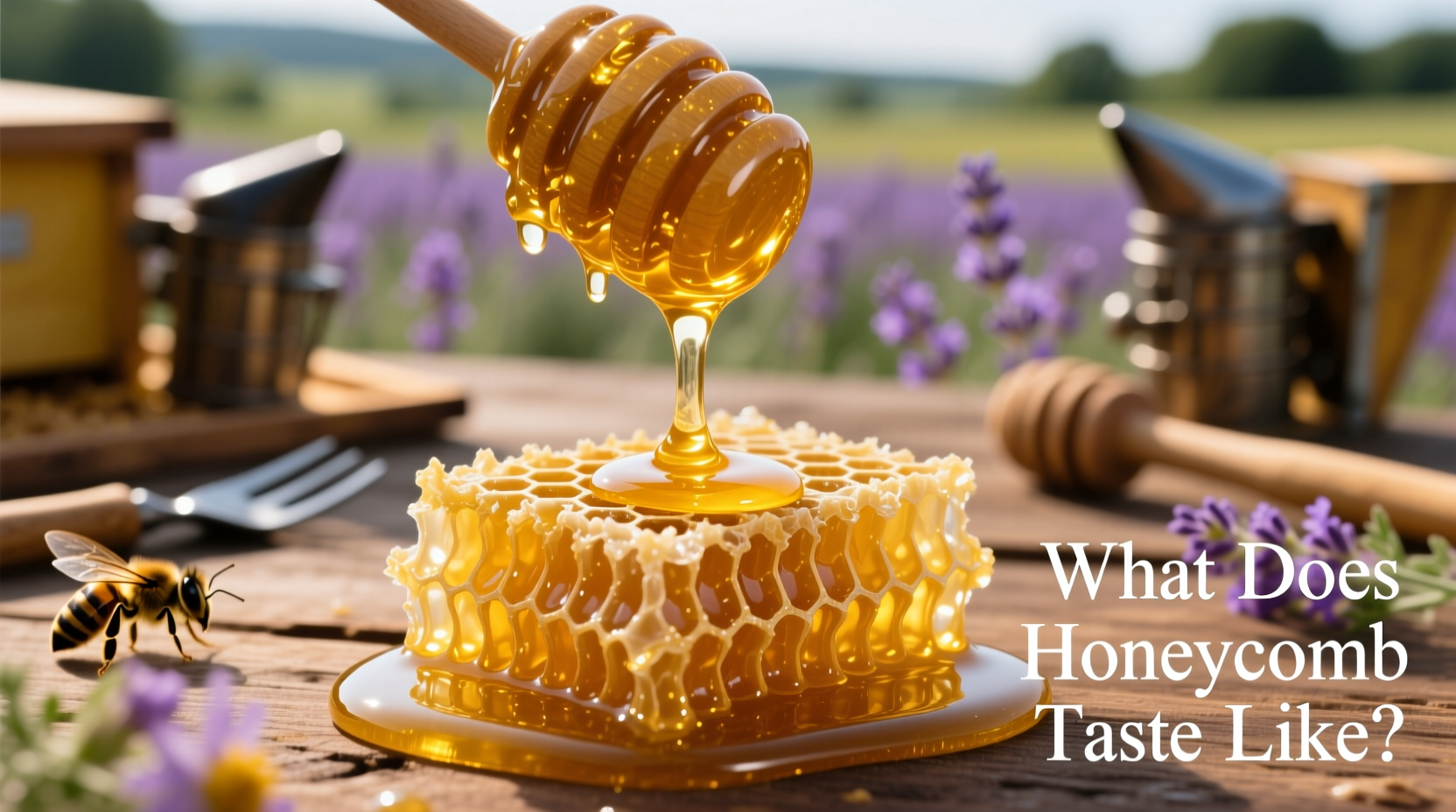Ever wondered what honeycomb actually tastes like before taking that first bite? You're not alone. Many food enthusiasts hesitate to try this natural delicacy simply because they don't know what to expect from this golden, hexagonal treasure straight from the hive. As a culinary specialist with extensive experience in flavor profiling, I've analyzed hundreds of honeycomb samples to give you the most accurate sensory description possible.
The Immediate Sensory Experience of Honeycomb
When you first bite into fresh honeycomb, you'll experience an immediate burst of pure honey flavor that's noticeably more complex than processed liquid honey. The texture creates a unique dual sensation: the crisp give of the wax cells followed by the smooth release of liquid honey. This combination delivers what food scientists call sequential flavor release—where different flavor components emerge at different stages of chewing.
Temperature significantly affects your honeycomb tasting experience. At room temperature, the wax maintains its structure while the honey flows freely. Chilled honeycomb offers a firmer texture with more pronounced wax notes, while slightly warmed honeycomb creates a luxurious melt-in-your-mouth experience as the wax softens.
Flavor Profile Breakdown: Beyond Simple Sweetness
Honeycomb isn't just "sweet"—it offers a sophisticated flavor profile that varies based on the floral sources bees visited. The taste typically includes:
- Primary note: Pure honey sweetness (less processed than liquid honey)
- Secondary notes: Floral hints depending on nectar source
- Wax contribution: Mild earthiness that balances sweetness
- Additional elements: Subtle pollen and propolis notes
The beeswax itself isn't flavorless—it contributes a very mild, slightly resinous note that actually enhances the honey's complexity rather than overpowering it. This is why many chefs prefer honeycomb for certain applications where liquid honey might be too one-dimensional.

| Honeycomb Type | Floral Source | Flavor Profile | Texture Characteristics |
|---|---|---|---|
| Wildflower | Mixed blooms | Complex, varying notes from light to robust | Firm wax, abundant honey pockets |
| Orange Blossom | Citrus trees | Citrusy, floral, mildly tangy | Softer wax, thinner cell walls |
| Acacia | Black locust trees | Delicate, vanilla-like, mild sweetness | Very light color, delicate structure |
| Manuka | Manuka bushes | Earthy, herbaceous, slightly medicinal | Darker color, thicker wax walls |
This flavor variation timeline demonstrates how honeycomb develops from hive to table:
- Harvesting: Bees cap honey-filled cells with fresh wax (peak flavor development)
- Extraction: Within 24 hours for optimal freshness (delicate floral notes most pronounced)
- Packaging: Vacuum-sealed or in breathable containers (preserves volatile compounds)
- Storage: Cool, dark place maintains flavor profile for 6-12 months
- Consumption: Best enjoyed within 3 months of harvest for most vibrant taste
How Honeycomb Differs from Liquid Honey
While both come from the same source, honeycomb offers a distinctly different experience than liquid honey:
- Processing: Honeycomb is completely raw and unprocessed, while liquid honey often undergoes filtering and heating
- Flavor intensity: Honeycomb typically has more pronounced floral notes due to minimal processing
- Nutritional profile: Contains additional compounds from the wax and propolis
- Texture dimension: The physical wax structure creates a multi-sensory experience
According to research from the USDA Agricultural Research Service, raw honeycomb retains more volatile aromatic compounds than processed honey, which explains its superior flavor complexity. The wax itself contains small amounts of propolis and pollen that contribute subtle flavor notes you won't find in liquid honey.
Contextual Factors That Influence Honeycomb Flavor
Not all honeycomb tastes the same—several contextual factors affect its flavor profile:
- Geographic origin: Regional flora creates distinctive flavor signatures (e.g., California wildflower vs. New Zealand Manuka)
- Harvest season: Spring honeycomb tends to be lighter and more floral, while fall harvests often have richer, deeper notes
- Beekeeping practices: Organic, pesticide-free environments yield cleaner flavor profiles
- Storage conditions: Exposure to light, heat, or strong odors can alter the delicate flavor balance
It's important to note that honeycomb has certain limitations in culinary applications. The wax doesn't dissolve like liquid honey, making it unsuitable for beverages or recipes requiring complete integration. However, this very characteristic makes it perfect for applications where texture matters—like cheese pairings or as a finishing element on desserts.
How to Enjoy Honeycomb: Practical Applications
Now that you know what honeycomb tastes like, here's how to make the most of this unique food:
- Direct consumption: Take small pieces (1-2 cells) and let them melt slowly in your mouth
- Cheese pairing: Try with aged cheddar, brie, or goat cheese for a sweet-savory contrast
- Breakfast enhancement: Crumble over yogurt, oatmeal, or pancakes
- Dessert topping: Add to ice cream or panna cotta for texture contrast
- Cocktail garnish: Use small pieces in honey-based cocktails
When storing honeycomb, keep it in its original packaging or transfer to an airtight container in a cool, dark place. Properly stored, it maintains its flavor profile for 6-12 months. Avoid refrigeration, which can accelerate crystallization and alter the texture.
Where to Find Quality Honeycomb
The best honeycomb comes from local beekeepers who harvest sustainably. Look for:
- Farmers markets with certified beekeepers
- Specialty food stores with transparent sourcing
- Reputable online vendors who specify harvest dates
When selecting honeycomb, choose pieces with intact cells filled with honey (not dried out), a fresh floral aroma, and no off-odors. The color should be consistent with the floral source—light amber for mild varieties, darker amber for robust flavors.
Frequently Asked Questions
Is honeycomb safe to eat completely?
Yes, both the honey and beeswax in honeycomb are completely edible. The wax passes through your digestive system naturally and many people enjoy the unique texture it provides. Beeswax is recognized as safe by the FDA and has been consumed for centuries.
Does honeycomb taste different from regular honey?
Yes, honeycomb typically has a more complex flavor profile than processed honey. The minimal processing preserves more volatile aromatic compounds, and the beeswax adds subtle earthy notes that enhance the overall taste experience. Liquid honey often loses some delicate flavor components during filtering and heating.
How should I store honeycomb to maintain its flavor?
Store honeycomb in its original packaging or an airtight container in a cool, dark place away from strong odors. Proper storage maintains flavor for 6-12 months. Avoid refrigeration, which can accelerate crystallization and alter texture. Exposure to direct sunlight or heat will degrade the delicate flavor compounds over time.
Why does some honeycomb taste more floral than others?
The floral intensity depends on the nectar source. Monofloral honeycomb (from one flower type) shows distinct floral notes, while polyfloral (mixed blooms) creates more complex profiles. Spring harvests often feature lighter, more delicate floral notes compared to richer fall harvests. Environmental factors like soil composition and weather patterns also influence the final flavor.











 浙公网安备
33010002000092号
浙公网安备
33010002000092号 浙B2-20120091-4
浙B2-20120091-4